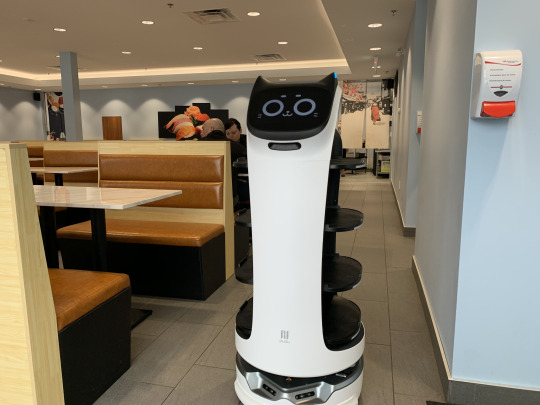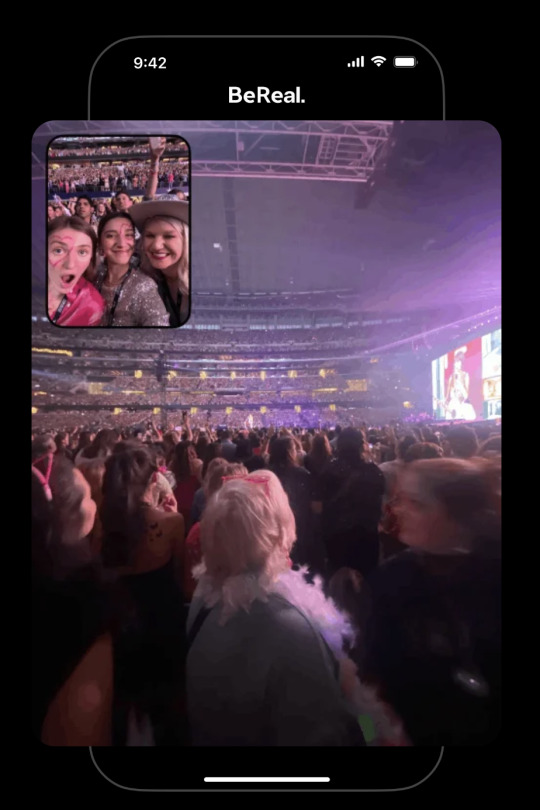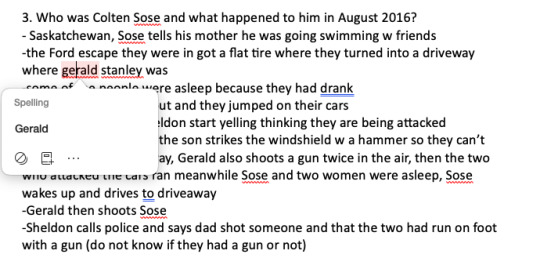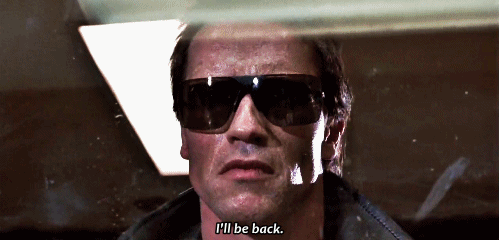Each endeavor we undertake is an exhibition awaiting an audience.
Don't wanna be here? Send us removal request.
Text
Exploring the Ethical Frontier of Generative AI: Crafting Memories Beyond Reality
Harmonia ✨
A post authored exclusively by ChatGPT in response to "Maria Mavropoulou — How the artist used AI to rewrite her own family history"

Mavropoulou's AI generated photo of her family by the beach
In the realm of artificial intelligence, the concept of generative AI has taken significant strides, offering fascinating prospects and raising profound ethical questions. Among its many applications, one particularly intriguing avenue is the ability to generate images of past events, experiences, or people that never truly existed. This technology delves into the complex interplay of memory, imagination, and the fundamental nature of reality itself.

Mavropoulou's AI generated photo of a birthday party that never happened
“I don’t have a single photo of a birthday party because I never had one, so I added many images of parties to help me reconcile my actual story” (Mavropoulou).
Imagine a scenario where an individual longs to relive cherished memories or fill the void of forgotten moments. Generative AI steps in, creating vivid images that evoke a sense of familiarity and nostalgia. These images could represent lost memories, or even conjure up scenarios that the person wishes had occurred. The implications of such technology are both profound and potentially transformative.
At first glance, the idea of generating artificial memories may seem unsettling or even ethically dubious. Memories are deeply personal and integral to one's sense of self and identity. However, this technology raises intriguing questions about the nature of reality and the subjective experience of memory.
From a philosophical perspective, what makes a memory "real"? Is it the objective existence of the event itself, or the subjective perception and interpretation of that event by the individual? Generative AI blurs the lines between reality and imagination, challenging our conventional understanding of memory and perception.

AI generated photo of a family dinner "embody[ing] all the hallmarks of amateur family photography; imperfect framing, awkward posing and forced smiles" (Fletcher).
Moreover, the concept of "reality" itself becomes increasingly elusive when viewed through the lens of quantum physics. Quantum mechanics suggests that reality is probabilistic in nature, with multiple potential outcomes existing simultaneously until observed or measured. In this framework, the act of observation itself plays a crucial role in determining the state of reality.
Generative AI operates within this quantum framework by creating images based on probabilities and patterns derived from vast datasets. In essence, it taps into the probabilistic nature of reality to produce images that, while not objectively "real," are perceived as such by the observer. This raises intriguing questions about the nature of reality and the role of perception in shaping our experiences.
“The AI seemed to know more than I did about a specific place and time, adding details to images I wasn’t aware of...While the images don't have any fundamental tie to reality, there is some version of knowledge in them due to the program’s ability to draw from such vast data sets" (Mavropoulou).

First car AI generated photo: "Anchoring us to each decade via subtle cues—fashion, design, beauty, behavior and photographic approach—born from DALL-E’s ability to synthesize typologies of any given scenario in a particular time and place from the millions of data points it draws from" (Fletcher).
The notion of creating memories through quantum physics' equilibrium introduces a fascinating layer of complexity to the discussion. In quantum mechanics, the principle of equilibrium suggests that systems tend to evolve towards a state of balance or stability. Could generative AI be seen as a manifestation of this principle, creating moments that achieve a form of equilibrium between past experiences and future possibilities?
While the concept may seem far-fetched, recent advances in AI and quantum computing suggest that such possibilities are not entirely out of reach. However, with great potential comes great responsibility. Ethical considerations must be at the forefront of any development in this field.
One of the primary ethical concerns surrounding generative AI is the potential for manipulation or exploitation. As technology advances, the line between reality and simulation becomes increasingly blurred, raising concerns about the authenticity and integrity of our experiences.
"While the images don't have any fundamental tie to reality, there is some version of knowledge in them due to the program’s ability to draw from such vast data sets. We attribute fakeness to AI images, but in many ways, they reflect a universal truth" (Mavropoulou).
Furthermore, there are profound implications for personal identity and autonomy. If memories can be artificially generated, what does it mean for the authenticity of our lived experiences? Are we at risk of losing touch with our true selves in a world where reality can be manipulated at will?
"Is an image less meaningful if it’s illustrative rather than authentic? What does it mean if AI images provoke feelings in us the same way genuine photographs do?" (Fletcher)
In conclusion, the concept of generative AI creating images of a person's past that do not actually exist opens up a fascinating frontier of exploration at the intersection of technology, philosophy, and ethics. While the technology holds tremendous promise for enriching our lives and expanding our understanding of reality, it also poses profound challenges that must be carefully considered and addressed. As we continue to navigate this brave new world of artificial intelligence, it is essential to approach these questions with thoughtfulness, integrity, and a deep respect for the complexities of human experience.
“I’m turning a spotlight on technology, trying to understand how it sees us and, in turn, how it shapes how we think about ourselves” (Mavropoulou).
0 notes
Text
AI Generated Images: The Concept of the Signified and the Signifier
By Amphitrite🧜♀️
As I get older, I begin to reflect on the past more often and to do so I look back at old family pictures and videos. These allow me to piece together my childhood and remember parts of it that I never would have thought of. Family pictures and videos are not meant to be works of art, I feel that they are meant to be a collection of the best memories, like a highlight reel of my life.
I had never thought of how my memories would shift or my perception of my childhood would change if I had not seen these family albums. In reading “Maria Mavropoulou — How the artist used AI to rewrite her own family history,” I was able to understand the perspective of someone without old family photos to reflect on. Instead, Maria Mavropoulou was able to create family photos from personal memories using DALL-E, an AI program. While generating these images, she explains that based on scenarios, objects, different time periods, and descriptions of people, she was able to create photo replicas of her childhood memories. She also was able to create images of memories she wished had occurred.

What stands out to me in Maria Mavropoulou's story is the accuracy of the time period and the people that she was able to create in these images. Although the faces are distorted, you can still makeout who the people were meant to represent, according to Maria Mavropoulou. The accuracy of DALL-E reminds me of Ferdinand de Saussure’s concept of the signified and the signifier. The signifier is the image that gives meaning and the signified is the concept that is evoked in one’s mind, thus the conveyance of the overall meaning is created. What is interesting to me is that DALL-E is able to utilize the concept of the signified and the signifier to convey accurate AI generated images while the objects are not necessarily accurate themselves. For example, when looking at the images of people’s faces, we cannot see the faces of the individual or much of the facial features. However, we can tell that this is meant to be a person’s face. Therefore, AI image generators are made so that they do not have to necessarily depict human beings, but what they must generate is enough signifiers to convey people to the AI user.

Therefore, through Maria Mavropoulou's use of AI to generate family pictures, we can deduce that the accuracy level of the images is based on how many signifiers can be detected by the human eye to give an overall meaning to the scenario happening in the family photo. This leaves me thinking about the question that she presents at the end of the article: “What does it mean if AI images provoke feelings in us the same way genuine photographs do?” The conclusion I have reached is…Is that not what AI images are meant to do? If the AI generated images are intended to replicate family photos, then of course they are going to provoke emotions. The same way when we see art that reminds us of something upsetting, we feel, even if the art is not directly representative of the signifier it reminds us of. The only difference with AI generated images is that the signifiers accurately signify something meaningful to us. Overall, I find that when AI generates images that provoke feelings in us, it is the result of the information we input into the program, and thus does not ‘signify’ anything beyond what a piece of art would.

0 notes
Text
Do Robots Deserve Rights?
By: Hydra 🐍
I want to start this post by firmly stating: I AM NOT SCARED OF ROBOTS!! Except maybe that AI Robot named Sophia… I am just simply unsettled. Maybe it is because I enjoy immersing myself into a good science fiction book, movie, or video game? For example, my favourite solo player video game is Detroit Become Human. The game follows three different androids, all in which have different jobs but act as a type of servant for an owner. Throughout the game you are faced with prejudice, which ultimately leads you to have to choose between breaking the programming and becoming a deviant (gaining a consciousness of one’s own), or continuing to live as a slave to an other.

If roboticist Alan Winfield is correct with his statement: “Real robotics is a science born out of fiction,” (2011, 32) how are we to assume that robots gaining consciousness will not be a relevant topic in the near future? I mean we have a A LOT of fictional media existing around the idea of such topic (M3gan, Black Mirror, I Am Mother). In my opinion, scientist should be more focused on creating the flying cars from Back to the Future instead of frenzying over the next trendy artificial intelligence. Imagine never having to worry about sitting in rush hour traffic EVER AGAIN.

I realize the whole idea that “robots will take over the world one day” may seem comical to some, but If you really think about it, this notion is already in motion (hehehe that one made me feel like a white dad). The man of the moment himself, David J. Gunkel says, “Despite what is imaginatively foretold in fiction, the robot invasion is not coming from the future. The robots are already here. Like the “barbarians” that were said to have invaded Rome, we have already invited the robots into our places of work, into our homes, and into our lives. They are already all around us, even if we often do not see or identify them as such” (Gunkel 7).
I will assume you are human if you are reading this, and therefore I will also assume you have been inside a grocery store (considering you must consume food to survive). Well this being said, have you noticed the progression of self checkouts becoming more and more frequent? It’s so simple to go in and scan all your items, letting the machine do the brunt of the work for you. Or maybe you are a little more bougie and have experienced the cat robots of sushi places that act as a substitute for servers… IS THIS NOT AN EXAMPLE OF ROBOTS ALREADY BEING HERE AND RELEVANTLY USED?? That was a rhetorical question because OF COURSE IT IS. Even in the comfort of our own home we rely on robotic devices like Amazon’s ‘Alexa’ or Apple’s ‘Siri’ to turn on/off lights, answer questions, set alarms, etc.

So how did we get here? If we think about famous french philosopher Gilles Deleuze’s essay “Postscript on the Societies of Control,” Deleuze argues, “This technological evolution must be, even more profoundly, a mutation of capitalism […]” (Deleuze 4). This would make sense given the examples above, because these robotic machines tend to replace human jobs and duties. Robots don’t require a paycheck like people do. Therefore, the capitalist win once again. Human Kind: 0, Capitalism: 1,000,000,000.
Since it is evident we are living in a time that depends heavily on robots and technology for everyday use, I would like to bring up another question raised in Gunkel’s book: “Can and should robots have rights?” This question really perplexed me. At first, my obvious answer was ‘no.’ Robots are already taking away jobs from people who actually need to make money in order to survive. How can a machine need rights equal to those of humans? They do not have consciousness and souls (as far as I know)! That question’s ridiculous right? But then I think back to my favourite video game and how gut wrenching it felt having to play as an android with no rights or freedom of speech. I feel a little more tempted to say yes to Gunkel’s question after that, but I just don’t have it in me to place technology over living, breathing, flesh.

Should we be more empathetic and moralistic towards technological beings such as robots? Or is it more important to value our own human rights, especially considering that is a questionable topic in it’s own?
2 notes
·
View notes
Text
Trolling & Doxxing Directed at Graduate Students
By Amphitrite🧜♀️
As the amount of online users increases, so does the amount of online harassment, particularly in the forms of trolling and doxxing. Now, you may be wondering what trolling and doxxing is. This form of online harassment is generally directed towards celebrities. Trolling is hateful messaging directly attacking another person or platform. For example, Taylor Swift has experienced trolling. Taylor Swift has received a multitude of hate comments directed at her, such as comments saying “you have ruined the NFL” or “you have rigged the Super Bowl so that the Chiefs win.” This continuous stream of extremely hateful messaging is trolling. Then, there is the concept of doxxing, which is the more extreme version of trolling. Doxxing is the exposure of a person’s private information online. In the case of Taylor Swift, her fans have actually doxxed Taylor Swift haters. For example, when Taylor Swift fans saw a hateful article posted about her Era’s tour, they proceeded to find the author. From there, the author’s full name, address, and other personal information was leaked. The author was scared for her life and her family’s well-being after this doxxing incident.

However, trolling and doxxing does not only happen to celebrities, it happens to everyday people as well. A group that has recently experienced trolling and doxxing is graduate students. Alex Borkowski, Marion Tempest Grant, and Natalie Coulter released an article called “Trolling and doxxing: Graduate students sharing their research online speak out about hate” that explains this frightening situation. Graduate students are facing trolling and doxxing because in order to facilitate research and find opportunities, they must have an online presence. This online presence leads to trolling and doxxing from people who do not agree with their research. The target is generally marginalized students such as people of colour, women, and LGBTQ+ individuals. This online harassment affects graduate students' final product of work because they are changing their research to avoid hate. It also leads to a decrease in mental health. “Bearing Witness” is a project that studied the effects of trolling and doxxing on graduate students. They found that many were suffering because they were not provided with mental health resources to help them navigate the online harassment. Borkowski et al., using their research, advocate for clear protocols when it comes to dealing with trolling and doxxing directed at graduate students. As well, they assert that universities should warn and prepare students for the potential online harassment and provide them with viable solutions to it.

In my opinion, the most unnerving part about the trolling and doxxing directed at graduate students is that they never know when they will be the victim of a cyberattack. Thus, they are constantly overanalyzing the work that they put out. This parallels Bentham and Foucault’s idea of the panopticon. The panopticon is the concept of a prison guard tower that has a view of all the prison cells. However, the inmates do not know which cells are being viewed by the guard at what time, causing them to consistently act appropriately. The overall idea is that one is being watched, they just do not know when. Graduate students are under this panopticism, the cell being their personal online platform and the guards being other users. This panopticism forces graduate students to create work that is palatable to the masses because they never know who will view their work or when they may be attacked because of said work. The work they produce now must have an element of neutrality to avoid online harassment. Although, in creating work that is meant to avoid trolling and doxxing, they are not exploring the topics that interest them. Thus, their overall quality of work diminishes. Graduate students are constantly trying to avoid being victims of trolling and doxxing; therefore, how can they produce innovative work in this state of panopticism?

0 notes
Text
BeReal, My Ass. Also, Sue Sontag!
By: Andromeda 🌊🪨

I think I just threw up in my mouth a little. Listen, I know that there’s more than enough hate in the world. I’m not a hater! Really, I swear! There are, however, things that I hate, and one of them is social media platform BeReal. If you’re lucky enough to have avoided this monstrosity until now, here’s how it works: once a day, at random, the app sends you a notification proclaiming, “It’s time to be real!”. This rallying cry comes with a two-minute window for users to take a picture of themselves and whatever they’re doing, to be shared with a network of followers. If you’re me, you hate this already. Like, a lot. If you’re Susan Sontag, you probably have a word or two to say as well.
In On Photography, Sontag describes the act of taking a photo as, “a social rite, a defense against anxiety, and a tool of power” (8). The most intuitive connection between this characterization of the photo and BeReal is the social aspect. BeReal posts (or simply ‘BeReal’s) are moments captured, frozen, and packaged as a signal to an audience of followers: and the stakes here are higher than those of Instagram or TikTok. The temporal nature of the BeReal–followers are notified when you’re late to post–strips a significant amount of the poster’s ability to curate an image, and strengthens the tie between picture and life. An Instagram post can happen months late, whereas BeReal demands you to be fun and cool at its beck and call.
The imperative for the performance of authenticity is in the name itself! Be Real, or be taken out behind the barn and shot! (Fine, it’s a little extreme, but I need you to know how much I hate this app and everything it represents!) And just looking at those bullshit taglines, riddled with buzzwords that suggest legitimacy: spontaneous, authentic, genuine, real. Who the fuck wants to be real?
I’m reminded of the day of a relatively recent concert in my city. I was at home, enjoying the comfortable silence of parallel play with a friend at home, when she suddenly laughed. She proceeded to tell me that most of the people we knew had posted their BeReals just shy of three hours late. We scrolled through her feed (I myself being far too righteous to have my own account, and just righteous enough to habitually peruse hers), the posts constructing an eerie gestalt of the arena: the same performer, the same time, but all from different people at different vantage points. Some of these people didn’t even know each other, united only by their location, a mutual acquaintance, and the tardiness of their posts. Each had decided to be fake. The importance of the event–or, the importance of the dissemination of proof that they were in attendance–took precedence over bowing to the caprices of the fickle BeReal. “A photograph,” Sontag writes, “passes for incontrovertible proof that a given thing happened. The picture may distort; but there is always a presumption that something exists, or did exist, which is like what's in the picture.” If a photo is proof of where you were, who you were with, who you are, and BeReal is the vehicle with which to share that information, sacrificing punctuality for the sake of proving a more important event seems logical enough to me. Let the people see that you’re late–so long as they also see that you were within five hundred feet of Harry Styles!

From the BeReal website. Don't worry, I'm only exploiting people I know in written form.
For someone who’s never been to jail (because I’ve never been caught), I find myself thinking about the panopticon surprisingly often. Well, maybe it’s not that surprising: one doesn’t have to be in jail, or house arrest (or even probation!) to understand the concept of structuring your life around the possibility of being watched. Honestly, I think that it’s the exact mentality that BeReal cultivates (between you and me, dear reader, I’d take the house arrest–hello, free anklet!). It’s sitting under the sword of Damocles, living in a state of perpetual limbo until the thread snaps, the curtain is swept aside, and it’s showtime, baby! Sontag writes of the photograph as an impediment to living: “a way of certifying experience, taking photographs is also a way of refusing it–by limiting experience to a search for the photogenic, by converting experience into an image, a souvenir.”

Sontag also notes the violence of photography: “there is something predatory in the act of taking a picture. To photograph people is to violate them, by seeing them as they never see themselves, by having knowledge of them they can never have; it turns people into objects that can be symbolically possessed.” The BeReal slightly complicates this idea: in my opinion, it renders the violence more perverse. Instead of taking a photo, BeReal demands its surrender. The subject does possess the power of the photographer, because they are one and the same. But no sooner than they obtain that power, they are forced to yield it, to place their photo–their location, their companions, their incomplete yet forever-sealed self–in the hands of the viewer. Though the violence is self-inflicted, it is no less piercing. Woah! That got serious! Who knew that the power of my hatred for BeReal alone would be enough to fuel my transformation into a quasi-legitimate academic! God, I fucking hate BeReal.
0 notes
Text
Advancing Racial Literacy in Tech: Implicit Bias Training Does Not Work
By Amphitrite🧜♀️
During class today, I was taking notes on the racialized injustices against Indigenous people. As I began to go through the autocorrect suggestions on my notes document, I noticed that all of the names of white people auto corrected to be capitalized, whereas all of the Indigenous names said that they needed to be spell checked. At that moment, I realized that everything, even technology, was affected by the systemic racism occurring in our society. It is not right that only white names are recognized by these softwares. Although, I do not blame the software itself for these issues, I blame the way in which these softwares were created.


Jessie Daniels, Mutale Nkonde, and Darakhshan Mir discuss instances, like mine, of racialized technology in their article “Advancing Racial Literacy in Tech.” This article explains how technology is seen as objective; however, in actuality, these technologies have been designed to exhibit pre-existing human biases. To combat these issues of racialized technology, the technology industry has brought forth discussions about supporting diversity and inclusion, bringing awareness to implicit biases, and recognizing that there is a lack of diversity among the technology industry as a whole. Although this discussion is occurring, nothing seems to be changing. Daniels et al. proposes a new solution that involves a deeper intellectual understanding of the issues at hand, increased emotional intelligence, and a true commitment to taking action. This text brings awareness to the kind of racial literacy that is needed in tech today.
Daniel et al. bring awareness to the fact that implicit bias training does not work. This assertion reminded me of a bell hooks reading called “Loving Blackness as Political Resistance." In this text, hooks states that she “was weary of the way in which white people want to deflect attention away from their accountability for anti-racist change by making it seem that everyone has been socialized to be racist against their will” (hooks 6). I agree with bell hooks because I believe that people may potentially use the term implicit bias to minimize the impact of their actions because they believe that this mistake is not by fault of their own, but the fault of society as a whole. Although, it is necessary to recognize that individuals must be held accountable and resolve their own implicit biases to help society altogether.

In my opinion, instead of implicit bias training, tech companies should implement social accountability. This means that racist actions must face real consequences. An act of implicit bias should be treated as something that requires disciplinary action, rather than just attending yet another implicit bias training. This social accountability begins by having leaders take accountability for their own actions. For example, leaders should disclose the salaries of their employees to ensure that men, women, non-binary people, and people of colour are all getting compensated fairly and equally. Additionally, leaders need to continue to hire diverse groups of people. If this social accountability begins at the top level of management, then the rest of the employees are more likely to follow suit.
In terms of social accountability in tech, companies should continue to advocate for social accountability as well as take accountability for the biases in the technology itself. For example, when they see that only white names are recognized by their software, they should be held accountable and fix it immediately. Acknowledgement of the problems are not enough, there needs to be accountability followed by solutions.
Daniels et al. recognize that a commitment to taking action is key to combat racialized technology. My hope is that the issue of racialized technology and the lack of diversity in tech is resolved through accountability and the integration of real solutions.

0 notes
Text
BRITNEY SPEARS CLONED AND REPLACED?!?!?!
By: Hydra 🐍
Looks like you fell into the trap of conspiracies with that title huh?
I would like to start this discussion with the quote provided by Bridle saying, “We’re all looking at the same skies, but we’re seeing different things.”

When I first read this, I was immediately transported back to a memory of visiting the 9/11 Memorial Museum in New York City. One of the “exhibits” (I put the word ‘exhibit’ in italics here because it feels wrong to describe these pieces as merely “art” on display for the public) was a wall filled with squares identical in size, yet significantly different in colour. The idea behind the installation is that many different people saw the sky that day, but all viewed it differently (almost exactly what Bridle mentioned in their quote!). Bob may have woke up, looked at the sky and said, “What a nice clear blue sky we have today,” but our perception of the colour blue may not be the same as Bob or anyone else for that matter.
I guess the point I am getting at here is: no matter what we are presented with, we will each perceive (insert item) in a completely different way, unique to our individuality.

Take Marcel Duchamp’s Fountain for example. Where I may be disgusted that someone has simply turned a urinal on its side, signed it, and called it “art,” someone else may view as beautiful; An everyday item that we don’t think to appreciate. If anything, the piece opened up major discussion of what “art” meant to each individual. Trust me when I say the artists and intellectuals of the world took little time to get their grippers on the “clearest” explanation of Fountain’s purpose and importance.
As an Arts and Humanities student (advanced at that! Thanks SASAH!) that feels the pressure of abiding to the intellectual lifestyle, I can’t help but call upon notable philosopher: Immanuel Kant. Kant has this crazy in depth theory about individual taste… but to spare some time, I will just bring up his critique of the aesthetical judgement. Kant’s critique states, “In order to decide whether anything is beautiful or not, we refer the representation, not by the Understanding to the Object for cognition but, by the Imagination (perhaps in conjunction with the Understanding) to the subject, and its feeling of please or pain” (OSU Library).
So what main stream, controversial, opinionated, subject can we apply all of this to??
CONSPIRACY THEORIES

I’m going to bend Kant’s critique to fit my argument and you can’t stop me (!) because guess what? This is my post and you are simply a mere voyeur to my biases hehehehehe
Conspiracies are the ideal beautiful object in this scenario. We spend time listening to them and forming our own opinions on them (whether good or bad), not because of the “logic” provided from them, but because they free our imagination. They allow us to think and discuss beyond popular and imposed upon beliefs (I’m talking societies of control type shizzz), but all though we can express freedom of speech within this, it can lead to dangerous outcomes.
Elise Wang’s TED Talk “Why some conspiracy theories just won’t die,” describes the dangerous outcomes of conspiracy theories. Where one may think they are silly and lighthearted, another may use certain conspiracies to validate a negative opinion (Wang mentions violence and racism) to commit crimes. Do you remember that time a mob invaded the U.S. Capital because they believed that the Democrats were “rigging” the election against Donald Trump? Well the FBI considered that to be an act of domestic terrorism, proving that people act upon violence when applying specific conspiracies.
So what is the solution? Wang suggests that media literacy is the solution that has been proposed, but she does not agree with this. Wang says, “[...] being presented with information that contradicts a firmly held belief is more likely to back fire, making you cling to that belief harder than it is to change your mind” (4:56). When confronted with evidence that challenges someone’s beliefs, they will most likely respond defensively, even if it means ignoring or distorting evidence to fit their prejudgments. Instead Wang’s call of action is: work as an activist. Instead of falling down the rabbit hole of trying to debunk people’s theories (because at the end of the day we have realized media literacy doesn’t work), we must stop giving a platform to radicalizers (14:54). → “[...] proactively protecting the people that conspiracy theories target” (15:02). I agree with Wang in the sense that this has worked in the past. I hate to bring up Trump twice, but he did become a lot more irrelevant once he was put in time out and banned from Twitter.

You may be wondering how we went from talking about a urinal to serious societal issues, and I am also wondering the same…. I guess I am leaning into my yapper characteristics. Anyway’s with all this said, I hope Wang’s solution won’t prevent me from being provided with a good ole’ video about how Chuck E. Cheese reuses old pizza…

2 notes
·
View notes
Text
With a Little Help From My Friends: the Construction of the Self Through Others
By: Andromeda 🌊🪨

No, you didn’t just read the work of Kant, Hegel, or Schopenhauer. The burst of profundity you were just blessed with is from the diary of yours truly, written last May. As the work of great scholars is wont to do, the entry from whence this excerpt came raised several questions for me:
Why did I write so much about Succession?
Why wasn’t my Zoloft dosage raised sooner?
And perhaps most compellingly, why did I imagine it being read?
Until now, the entry was completely private. There was no Reader, so why was I haunted by the idea of one? I guess it was kind of prophetic: lo and behold, what were once my most intimate thoughts are now blasted across your screen. And in a sense, it feels like sharing them with you has made them real–can it be that by wishing you, my “imaginary audience,” into existence, I’ve wished myself into existence as well?
These questions are evocative of Abeba Birhane’s article, “Descartes was wrong: ‘a person is a person through other persons,” in which she argues, “being is an act or event that must happen in the space between the self and the world.” Is that what Jerry Maguire meant?

Birhane opposes philosopher René Descartes, who, according to her, believed that others “have nothing to do with the basic constitution of the knowing self, which is a necessarily detached, coherent and contemplative whole.” Birhane considers the “self” an amorphous and porous concept, arguing that “we need others in order to evaluate our own existence and construct a coherent self-image.”
Hang on, you may say, how are you getting “the self” from your shitty melodramatic teenage ramblings? Fear not, I shan’t leave tenuous connections unbolstered. For said bolstering, I turn to our friend Michel Foucault. In Ethics: Subjectivity and Truth, he writes, “the writer constitutes their own identity.” Putting thoughts to paper calcifies them. Words become fossils of existence, scraps through which you can catch refractions of my selfhood. But who is the you in question?
For Foucault, imagining a reader is an inherent quality of writing the self: “the fact of obliging oneself to write plays the role of a companion.” So, is this dialogue with the self a satisfying substitute for the formative power of genuine interaction? I’m reminded of my second philosophical boyfriend, Frantz Fanon: in Black Skin, White Masks, he writes “to speak is to exist absolutely for the other.” Can the same be said of writing, or is a closed circuit enough to sustain us?
I’m sure it will come as a shock to none that all answers, including this one, can be found in my writing! The unsatisfying nature of an imagined companion is evident in my compulsion to imagine a real one while writing my entry. I was unable to shake the feeling of being watched when writing because I craved perception. It’s as Birhane writes: “We need others in order to evaluate our own existence and construct a coherent self-image.” I wasn’t a sufficient audience for myself, because isolation isn’t our natural state of being. The self is built from interaction, so a lack of interaction compelled me to imagine the possibility of it. It strikes me that writing the self is kind of like eating Twizzlers. Twizzlers taste awesome, and they're fun to eat, but they don't really have enough nutritional value to sustain you by themselves. You can't maintain a healthy body with just Twizzlers, and you can't build a coherent self with just an internal dialogue. Trust me, I've tried. Both.
Birhane, Foucault, and myself (perhaps the Destiny’s Child of critical theory?) all agree that, though private writing can be beneficial, it does not construct a satisfying other, and the lack of a satisfying other is ultimately the lack of a satisfying self. Foucault said that writing, “palliates the dangers of solitude.” The key word there is palliate–to the self, the simulation of the other in writing has the same nutritional value as the crayon-adjacent bullshit that Twizzlers are made of. As Birhane writes, “others"–or the proverbial kale and chicken breasts of this bizarre nutritional metaphor–“are vital to our self-perception.” No matter how much muscle you put in, it’s not possible to conceive a self without acknowledging the formative force of others–their pushing is just as important as yours. Who knew that identity construction and riding a see-saw were so similar?

4 notes
·
View notes
Text
Manipulation, Distortion, FOMO, & Nostalgia: Is the use of people as a subject to AI morally right?
By: Hydra 🐍
In response to Gem Fletcher's, "Maria Mavropoulou — How the artist used AI to rewrite her own family history:"
Artificial Intelligence is rapidly taking over the world– and no I am not referring to the humankind-killing AI robot in The Terminator– but the simplicity of having accessible AI engines at our finger tips. Take the app TikTok for instance, not only does it rely on AI to curate a “for you page” unique to each viewer based on their past data, but it also contains many filters that can be used to generate images from simple prompts. When these filters are used to distort ourselves or other individuals that exist in reality, are we negatively affecting the way we view humanity? Does manipulating images of people have any benefits, or are we essentially creating “false advertisements” in hopes to be perceived in a certain way?
Maria Mavropoulou tests these burning questions with an optimistic point of view. Mavropoulou creates AI photographs of events that have happened in the past and speculative “what if” scenarios, to fill the void of nostalgia due to the missed capturing of actual photographs throughout her life. Mavropoulou describes the collection of “Imagined Images” as healing on a personal level. She was unable to look back on her history in visuals, so instead she creates these images to help understand her past and shape her future.

Being a delusional girly myself, I am all for living in a false narrative world created by my own thoughts and fantasies. I also suffer from the commonly caught illness known as FOMO (For Gen X'rs who mistakenly clicked this Tumblr link expecting to prove how Artificial Intelligence is detrimental, FOMO means Fear of Missing Out), which I think Mavropoulou knows all to well. On a serious note, there is something gut wrenching about not having physical evidence of past events. Photographs encapsulate proof that an individual has truly lived. They freeze time to remind us of memories, which don’t always last in the storage of our own minds.
I can’t help but wonder if these images mask as a delusion, a way to distract herself from the hurt of not experiencing or retaining these monumental experiences. Is it healthy to find comfort in fiction? Maybe in the form of a good book, but isn’t distorting your whole past going a little too far? After all, this isn’t The Sims, we can’t actually use cheat codes to go in and completely alternate everyone that lives in our world (the default townies are just so... strange).
Although there are positive outcomes of creating images using AI software, there is also equally as many negatives. A big issue we are facing in this current digital age is the use of deepfakes. Deepfakes have been used to make people say explicit phrases and appear a certain way (usually pornographic material). These photos and videos can be created of anyone active in the digital space. If photos and other user data is available, it can be used. Deepfakes have been an extreme controversy in the past, but have recently regained attention when someone created explicit nude photos of (the iconic, might I add) Taylor Swift, and posted them on X. We now have to live with the worrying thought that people can use our images to unconsensually (and also unknowingly) create pornographic material.
I may be hypocritical because I too am part of the problem. I spend most hours of the day on my devices picking the perfect photos and videos of how I want to represent myself on social media, passively scrolling on TikTok until I am fulfilled– which never happens to be the case – and interacting with posts and filters that I know are obscuring the truth. Maybe we need to share less of our lives online to prevent people from using our information for AI distortion. Maybe if there is one thing we can take away from Mavropoulou’s collection, is the fact that we need to capture the moments in a photograph for personal use. Not a low quality image from an iPhone that constantly over heats because it is used far too often, but a physical camera specifically created way back when to do this exact job. Fuck phone cameras, I want to see someone pull out the heliograph at a bar.

0 notes
Text
010101 Spells ‘Systemic Issues’ : "A Feature, Not a Bug"
By: Harmonia ✨

The article “A Feature, Not a Bug” dismantles the myth of Silicon Valley as a meritocratic haven and delves into the pervasive discrimination rooted in gender, race, and class within the computing industry. It exposes how, far from being neutral, technologies often reflect and perpetuate existing power dynamics: “Technologies designed to reorient the ways we live, work, and think more often than not are created to model or enhance older forms of power and prestige.” Sexist values that originated in the early 20th century continue to plague tech industries today, where women are still predominantly seen as secondary workers. Despite initially being favoured for early computing jobs, women faced marginalization as the prestige of computing work rose, leading to their replacement by inexperienced men. This systemic discrimination persisted, with women excluded from professionalization benefits in the 1960s, resulting in their labelling as “Excluded Grades” and contributing significantly to the decline of the British computing industry in the 1970s. These discriminatory practices not only created social problems but also hindered innovation and efficiency within the high-tech labour market, exacerbating shortages of skilled workers and operational inefficiencies.
The article draws upon Margot Lee Shetterly’s acclaimed work, "Hidden Figures," to shed light on the pervasive gender-based discrimination in the UK government's computing sector and the impact of racism on technological advancements in the US space sector. Shetterly's book underscores “the importance of attending to the intersection of race, gender, class, and nationality,” compelling readers to confront the inherent racism ingrained in our technological ideals. Contrary to the oversimplified belief that the US "won" the Space Race by landing a man on the moon first, the reality is far more complex. Early setbacks for the US, including the USSR's pioneering achievements, such as launching the first satellite, Sputnik, and sending the first person into orbit, challenge this narrative. Shetterly's narrative underscores the critical significance of acknowledging race, gender, class, and nationality in the context of technological achievements. Figures like Katherine Johnson and Dorothy Vaughan faced systemic barriers due to societal marginalization based on race and gender despite their remarkable talents and contributions. While the US's post-WWII success can be attributed in part to the devastation of its rivals' infrastructure and economies, systemic sexism and racism within technological institutions hindered the full utilization of diverse talents. The failure to address online abuse, misogyny, and racism has allowed major computing platforms to be exploited by groups seeking to undermine political stability, highlighting how technological systems often perpetuate existing systems of privilege and discrimination rather than embodying true meritocracy. Technology serves as one more surface for the blinding and oppressive light of systemic discrimination to reflect off of, “yet, we struggle to see that this discrimination was, and still is, an integral, foundational part of most of the computing systems we think of as successful—and even essential—today.”

“A Feature, Not a Bug” emphasizes the importance of understanding the often obscured computing world and argues that the prevalence of these systemic issues within the tech industry are not glitches “but in fact designed to leverage and heighten existing discrimination.” Software development is often viewed as magic and black-boxed, creating a sense of separation and helplessness for users. Although the digital world is visited daily by most in Western society, users often do not understand how the technology works, making it impossible to decode the systemic issues that live in zeros and ones.

0 notes
Text
Subtly Skewed Pixelated Perception and the Importance of Digital Representation: “Asserting Aboriginal Territories in Cyberspace: Interview with the Artist Skawennati”
By: Harmonia ✨

What significance lies in the act of sight in 2024? Does it entail perceiving the world through pixelated lenses or within a digital framework? Are our phone and laptop screens akin to enchanted looking-glasses, offering glimpses into the world surrounding us? Do physical realities exist without digital documentation? If a tree falls in the forest and no one is around to hear it, does it make a sound? Today, we rely heavily on cyberspace to research, formulate opinions, and communicate, but have we considered whether our digital mediums to reality are to be trusted? Have we considered perspectives that either don’t exist online or are stifled in a media-saturated digital world?
Indigenous representation in Canada has long been a struggle, both in physical and digital spaces. Navigating the inequalities and systemic issues in these interconnected yet distinct realities poses a daunting challenge for Indigenous communities. Particularly concerning is the underrepresentation of Indigenous people in the technology industry, where less than one percent of tech roles in Toronto are occupied by Indigenous individuals.
Skawennati, an Indigenous artist, emphasizes the importance of asserting Aboriginal territories in cyberspace and challenging mainstream narratives about Indigenous people. Through her work, she confronts stereotypes and misrepresentations, including the notion that Indigenous cultures are "stuck in the past." Skawennati articulates the effect on Indigenous communities when they are seen as ‘a symbol of the past’ by sharing ‘the tragic statistics associated with Native people.’ Indigenous People have the highest dropout and incarceration rate in the country. They also have an alarmingly high suicide rate. Skawennati attributes these upsetting statistics to ‘the fact [Indigenous People can’t] see themselves in the future.’ Skawennati's project "She Falls for Ages" reimagines the Creation story in a futuristic setting, illustrating Indigenous culture as timeless and existing beyond historical or Westernized portrayals. In this project, Skawennati also subtly critiques social structures like schools, demonstrating that these structures were not designed to be accessible to everyone. The critique translates to cyberspaces, which falsely pose as inclusive yet are designed to stifle less dominant voices.

Skawennati aims to rewrite colonial narratives by showcasing Indigenous people thriving in the future, as seen in her work "TimeTraveller," which subverts common stereotypes about Indigenous men. Indigenous narratives have frequently been shaped by dominant voices in power, often to downplay the true extent of the hardships endured by Indigenous communities and to marginalize their cultural significance. This distortion may stem from a fundamental difference in cultural values, as Indigenous cultures often diverge from capitalist-centric ideologies.
By presenting her narratives through technology, Skawennati reaches a broader audience and facilitates a deeper understanding of Indigenous culture, leveraging cyberspace as a platform for cultural preservation and dissemination. With digital media taking the front seat, everyone must have room for expression. The benefits of sharing Indigenous cultural knowledge are vast, and encouraging Indigenous People to engage with the digital world would allow non-Indigenous people better access to Indigenous wisdom and opportunities to collaborate. It has become apparent with our global climate crisis that our consumer-oriented culture must adapt to the needs of our environment. Indigenous environmentally oriented perspectives are valuable and could help combat climate calamity.
However, it's essential to recognize the limitations of relying solely on the Internet for cultural knowledge. While the internet offers vast reach and accessibility, it often lacks Indigenous perspectives and cultural information traditionally passed down orally. This reliance on digital platforms risks homogenizing cultural narratives and overlooks the richness of Indigenous cultures that may not be extensively documented online. Although cyberspace may be the dominant space in which people conduct their research, it is important to utilize and appreciate the resources available in the physical space.
As society increasingly prioritizes digital interactions, there's a risk of neglecting tangible realities and missing crucial aspects of Indigenous culture. It prompts us to question whether something truly exists if it's not represented online and underscores the importance of preserving Indigenous knowledge and traditions in both digital and physical spaces. Voices should be heard, and people should be seen even if they don’t exist in ones and zeros; if to be seen means to be seen online, we must continue striving to make digital structures accessible and inclusive. Ultimately, achieving genuine representation and understanding requires a holistic approach that acknowledges and respects Indigenous cultures in all realms of society.

0 notes
Text
Before the Glitch: “Stylized Repetition” and Gender Performance in the Online Mainstream
By: Andromeda 🌊🪨
In the introduction to her book Glitch Feminism: A Manifesto, Legacy Russell writes, “Online, I sought to become a fugitive from the mainstream, unwilling to accept its limited definition of bodies like my own.” The “real world,” or the world “AFK” (Away From Keyboard) involves an immediate and fixed form of visibility, and thus pressure to conformity that the digital one doesn’t necessarily demand. However, as Russell writes, the “artifice of a simple digital Shangri-La” has been “punctured”– escaping the mainstream isn’t as simple as logging on. As all worlds do, the digital world is dominated by a “mainstream”, one rife with the “incessant white heteronormative observation” that Russell describes in her “AFK” to be fraught with. So what exactly does this digital mainstream look like? How do we “construct and perform” our “gendered self,” as Russell puts it, in the language of social media?
As a university student, meeting people typically demands 3 obligatory pieces of information: name (to be immediately forgotten), major (to be vaguely commented on), and Instagram account (to follow, and thus cement your new acquaintanceship. Also, to remind you of the name you just forgot). Despite what self-proclaimed “free spirits” and “casual-Instagrammers” will tell you, your Instagram is not just a photo-album for you to look back on, or a journal in which to document the events of your life. That’s what photo-albums and journals are for, people! It’s an image of yourself designed for presentation, the digital face you present to old friends and new acquaintances alike: it’s your own curation of exactly how you want to be perceived, neatly packaged in rows of three. On Instagram, “performing [one’s] gendered self” under “incessant white heteronormative observation” is the name of the game. Personally, I would even venture to say that any online presence is an inherently exhibitionistic one. If you disagree with me on that one, fine. Go write about it on your tumblr.
What you can’t argue is that using Instagram, arguably the most popular social media platform today, is an exercise that begs for observation, for engagement, for the imposition of opinions and identifiers. In Camera Lucida: Reflections on Photography, Roland Barthes (one of the only tolerable men that France has ever produced) writes, “every photograph is a certificate of presence.” Let’s for the moment table (read: ignore) the complications of technological tampering on the semiotic-ontological-whatever relationships between photo and subject raised by the likes of Stephen Prince and Lev Manovich (as neither of us have the time for that), and take what Barthes says at face value.
If a photo is a certificate of presence, we can consider Instagram to be a glass case of certificates of your choosing still and pristine as they tell the story of digital you, spectated you, ossified you. And here’s the kicker: you’re not only on display in the case, but you’re on display as the person who curated it. If you’re a pretentious asshole like myself, you can think of these curatorial choices as the metalanguage of your Instagram (I warned you!). What, with whom, and how often you post all exist in the context of your choice to post at all, and the fact that every post has an agenda (regardless of what that agenda might be). Each post is a stylistic choice, a piece added to the puzzle of one’s digital identity.
In Performative Acts and Gender Constitution, Judith Butler (who happens to be the celebrity hall-pass of a friend of mine) describes gender identity as, "an identity instituted through a stylized repetition of acts. Further, gender is instituted through the stylization of the body and, hence, must be understood as the mundane way in which bodily gestures, movements, and enactments of various kinds constitute the illusion of an abiding gendered self."

I feel that this passage (along with facilitating my understanding of the hall-pass thing–I can think of bodily movements of various kinds that I’d like to repeat in a stylized manner with Judith) is easily translated to the idea of gender performance online. What are posts, if not stylized acts? Lighting, pose, caption–every element is designed to, quite literally, cultivate an image. The sharing of posts, how they accumulate and interact, are acts of stylized repetition that, whether we know it or not, construct our digital identities.
As an example, take a look at this TikTok, which outlines a “recipe for a perfect photo dump.” A photo dump is a group of photos collected in one carousel Instagram post, typically designed to look effortless. But the detailed instructions in this post (including one “effortless photo”, an “outfit pic”, and a “personality pic” amongst others) exemplify a guideline for the exact kind of “stylization of the body” (albeit a digital one) that Butler describes, meticulously designed to communicate an identity. Even the arrangement of our Barthesian certificates of presence (the TikToker has graciously numbered each picture, so they may be ordered “perfectly”), is paramount in constructing our digital selves.
“The glitch,” Russell writes, “acknowledges that gendered bodies are far from absolute but rather an imaginary, manufactured, and commodified for capital.” What an unbearably fierce and pithy way to phrase how the body exists in the digital mainstream! From clean-girl to rat girl to coquette girl to messy girl (this one strikes me as particularly ironic–who knew there were so many rules to being messy?), it never fucking stops! These inflexible hole-in-the-wall shapes that we contort ourselves into through our online behaviour generate the same kind of frustration in me that led me to memorize the cool girl monologue in high-school. These trends and their proponents demand of us, as Russell writes, “a gender performance that fits within a binary in order to comply with the prescriptions of the everyday.” Unspoken rules and categories like these are just as, if not more, stifling than those in the mainstream that exists AFK.
Russell’s manifesto calls to mind one of my favourite winners of RuPaul’s Drag Race, Sasha Velour, and her verse in ‘Category Is…’, the song performed by the season’s final four competitors. There are a few lines in there that I think Russell might enjoy:
Wear a crown
Fuck with gender
Bend the rules
Don’t surrender

Sounds about right to me! The next time you see a clean-girl TikToker’s hair tutorial or diet plan or morning routine, just take three deep breaths, and think of Sasha. And you think hard enough, who knows? Maybe the force of your psychic energy will crack her forty-dollar gua sha.
2 notes
·
View notes